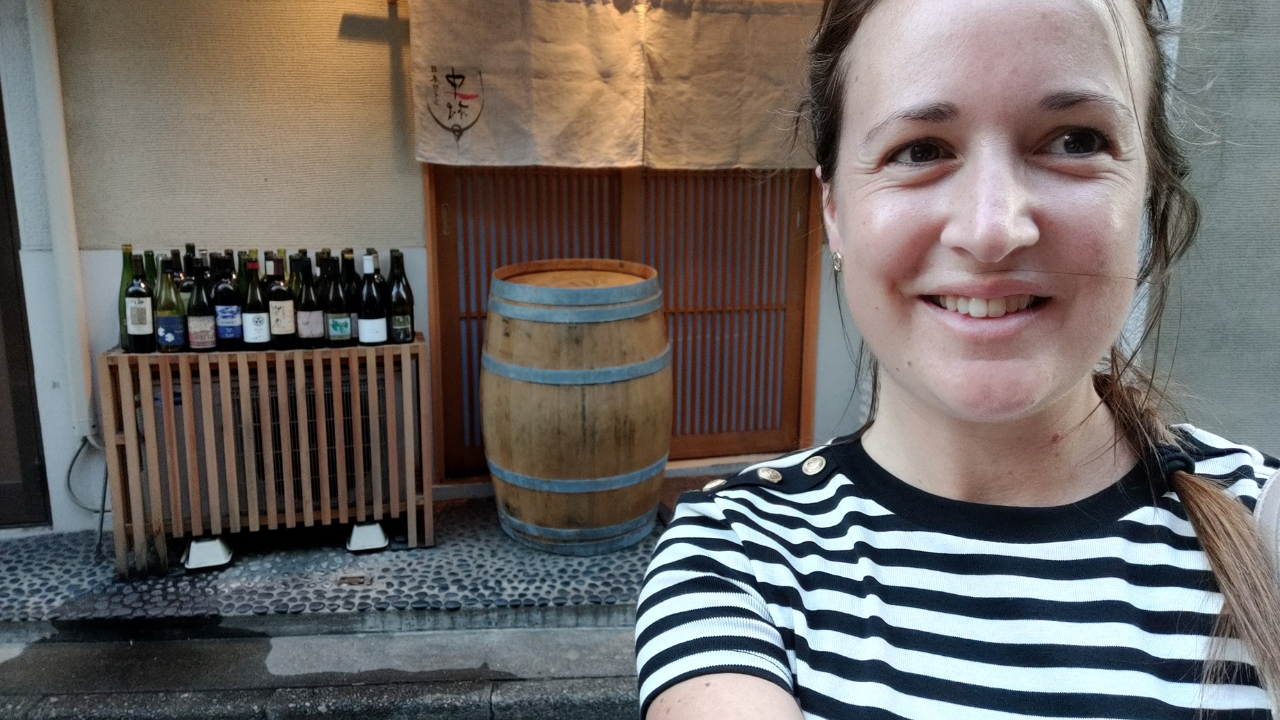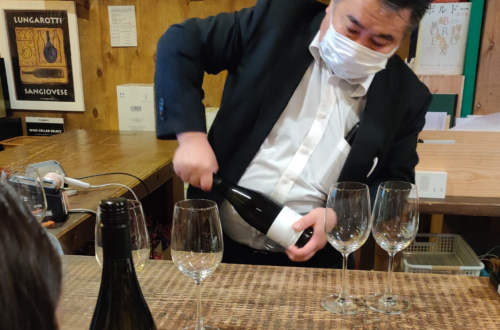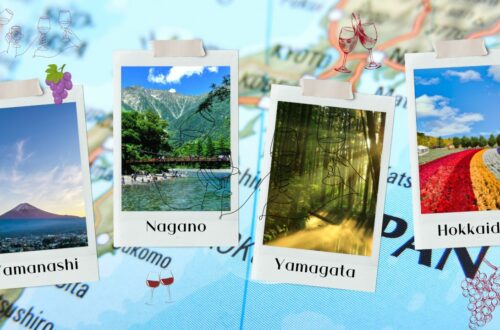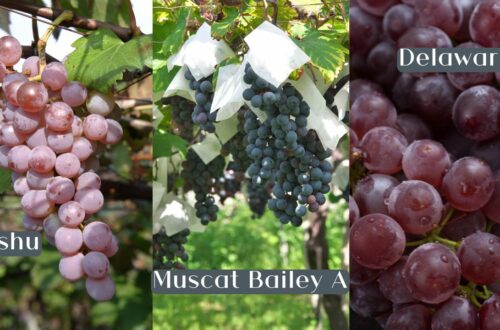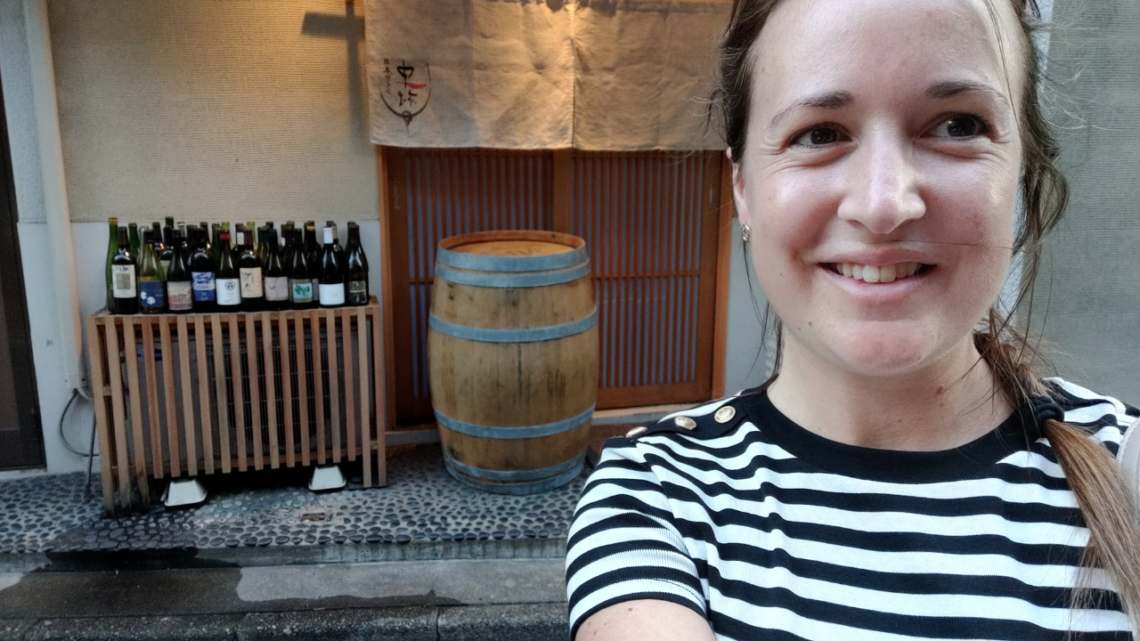
Where to taste Japanese wine in Tokyo? My secret address!
8 minutes read
Ever stumbled upon a hidden gem in Tokyo that completely changes your perspective?
Last night, I discovered an incredible Japanese wine bar tucked away in the heart of Tokyo. The hunt to find it was an adventure in itself, but it was worth every step.
This tiny, unassuming place is now my go-to spot to taste Japanese wine in Tokyo, offering a curated selection from all over the country.
When I finally found the place—a tiny, almost hidden bar with just a few wine bottles outside—I wasn’t even sure if it was open. But after a bit of hesitation, I decided to push the door… and I’m so glad I did!
Inside, I was greeted by a puzzled Japanese hostess who didn’t speak a word of English. No worries—Google Translate to the rescue! I explained my mission: to taste Japanese wines from across the country, focusing on regions like Hokkaido. (I don’t know why, but that region inspires me!).
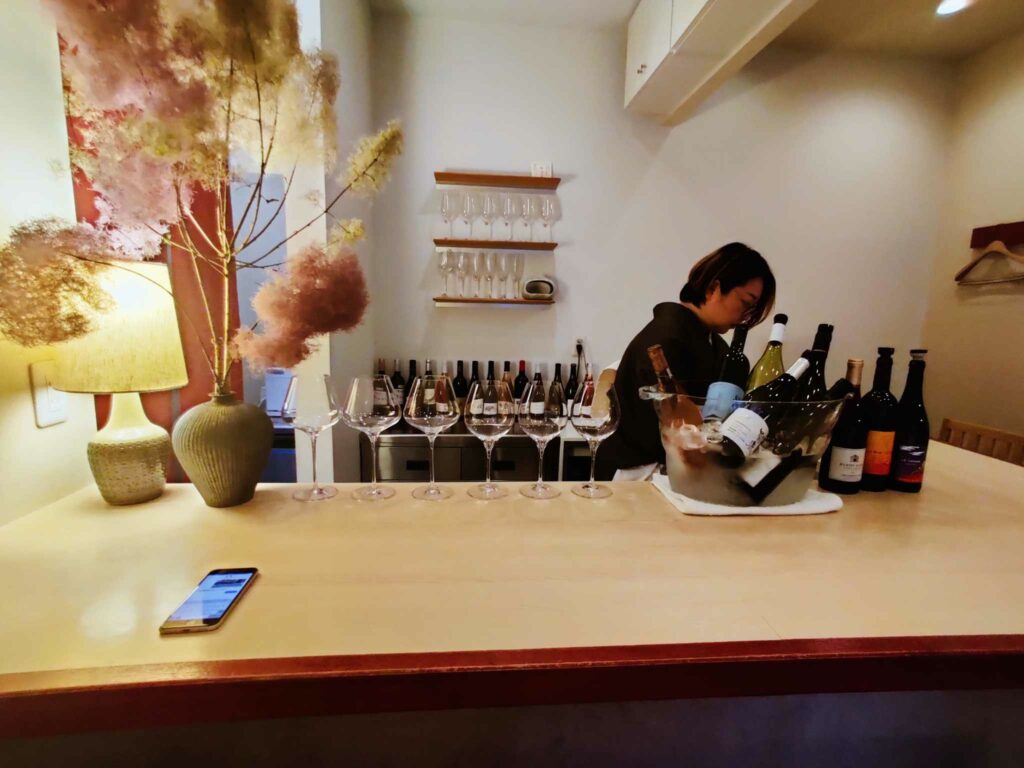
Then, she brought out 6 wine glasses, and the bottles kept coming…
I tasted 5 whites, 1 rosé, and 4 reds. Everything was delicious!
A must-remember spot!
NOTE: This isn’t a partnership (though given the quality of the wines, I wouldn’t say no!). I just wanted to share this find with you. A bar not to miss during your visit to Tokyo. Come with a Japanese speaker or Google Translate, and feel free to give advance notice via Instagram if you want to do a tasting!
SUMMARY : Ever stumbled upon a hidden gem that completely changes your perspective? That’s exactly what happened during my recent adventure in Tokyo. After a thrilling search, I discovered a small, secret wine bar that’s now my top spot for tasting Japanese wines. From the moment I found this cozy hideaway, the experience was nothing short of magical. I had the chance to explore a curated selection of Japanese wines, including some incredible whites and standout Pinot Noirs. Each sip revealed a new layer of Japan’s rich wine culture. Curious to learn more? Dive into the full post to read all about my wine-tasting journey and find out where you can visit this amazing bar yourself. The address is revealed at the end of the post!
My Favorite Japanese Whites: A Journey Through Unique Flavors
As the hostess brought out the glasses, I felt a rush of excitement. The wines she poured were nothing short of spectacular.
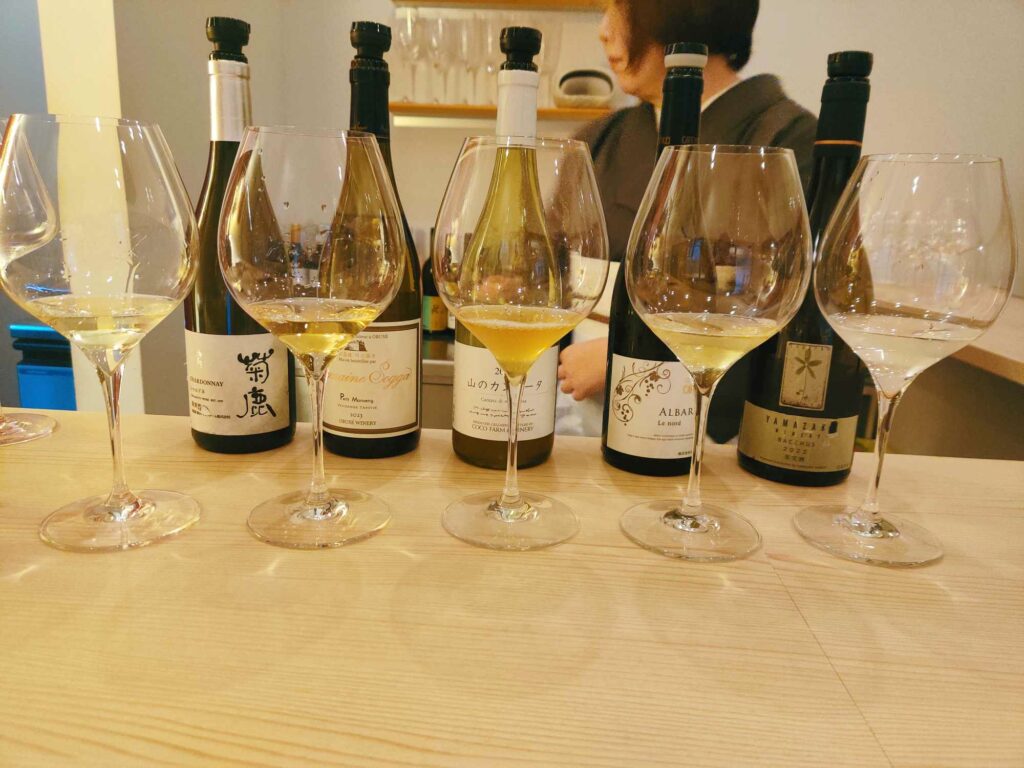
I started with five whites, each one more intriguing than the last.
Kikuka Chardonnay
The Kikuka Chardonnay, with its lush notes of white peach and vanilla, immediately caught my attention.
Made from 100% Chardonnay grapes grown in Kikuka, Yamaga, Kumamoto, with 2000 hours of annual sunshine, this wine is a true gem.
It’s fermented in stainless steel and aged in barrels, resulting in a deep, non-vintage blend with a structured profile. Expect soft, expansive aromas of white peach, apple, and vanilla, with a beautifully dry and long finish.
Petit Manseng from Coco Farm Winery
The Petit Manseng from Coco Farm Winery was a revelation—its bittersweet profile was both bold and comforting.
Coco Farm, located in Tochigi Prefecture, first planted Petit Manseng in 2006, and the results are exceptional.
The 2021 “Yama no Cantata” wine is a testament to the grape’s adaptability and the winery’s dedication to supporting young people with disabilities. With complex aromas of mango, tangerine, honey, and tarte tatin, this wine has rich acidity and a long finish.
Albariño – Le Nord
My third favorite is the Albariño, a varietal I’ve fallen in love with thanks to my recent trip to Spain.
The Niigata Wine Coast was the first in Japan to commercialize Albariño, and this wine, “Le Nord,” showcases its potential from the Hokuriku and Tohoku regions.
With simple fermentation in stainless steel, it reveals delightful aromas of stone fruits, apple honey, and citrus. On the palate, it offers rich fruit flavors and a slight astringency that tightens the taste.
Bacchus
Finally, Bacchus is a varietal I was unfamiliar with before this tasting. With a surprising color and a name that’s nothing short of magical, Bacchus is a cross between Silvaner, Riesling, and Müller-Thurgau. This wine is refreshingly aromatic with green apple and citrus notes, slightly sweet with peach-like softness, and a lovely acidity.
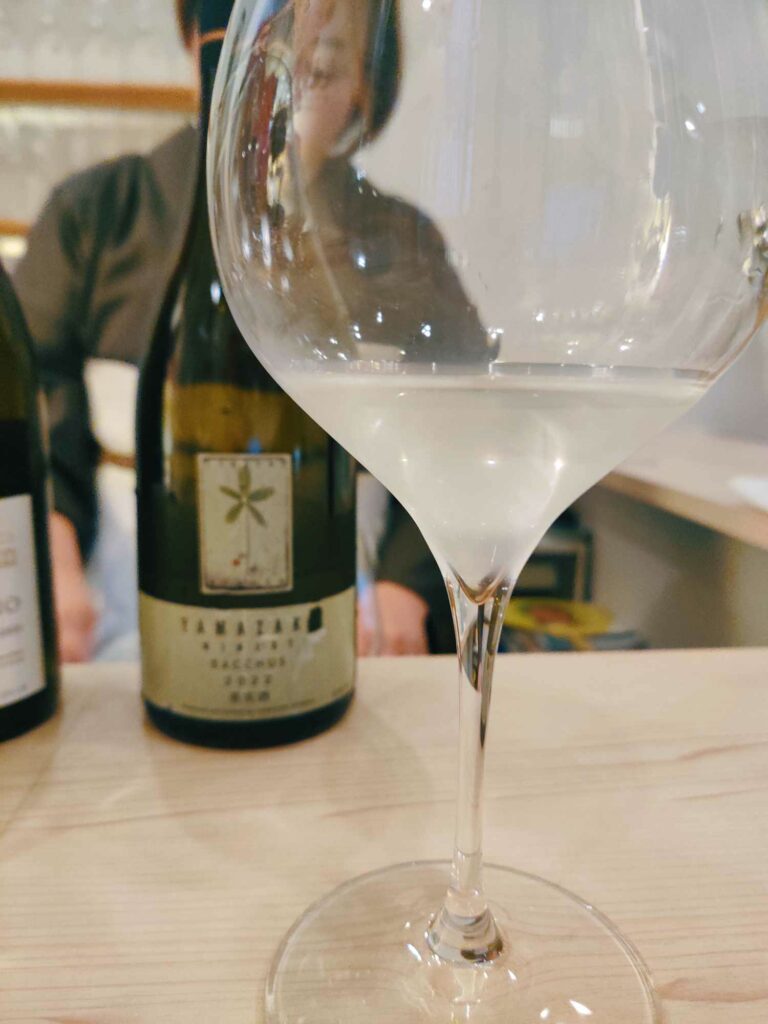
Special Note: These wines are produced in very limited quantities, making them a rare treat. If you’re tempted to try them, send me an email to book a Japanese wine tasting—spaces are limited, and these wines are not easy to find even in Tokyo!
Discovering Japan’s Finest: Pinot Noir Highlights
Ah, Pinot Noir—the versatile grape that never fails to captivate (well at least, never fails to captivate me!).
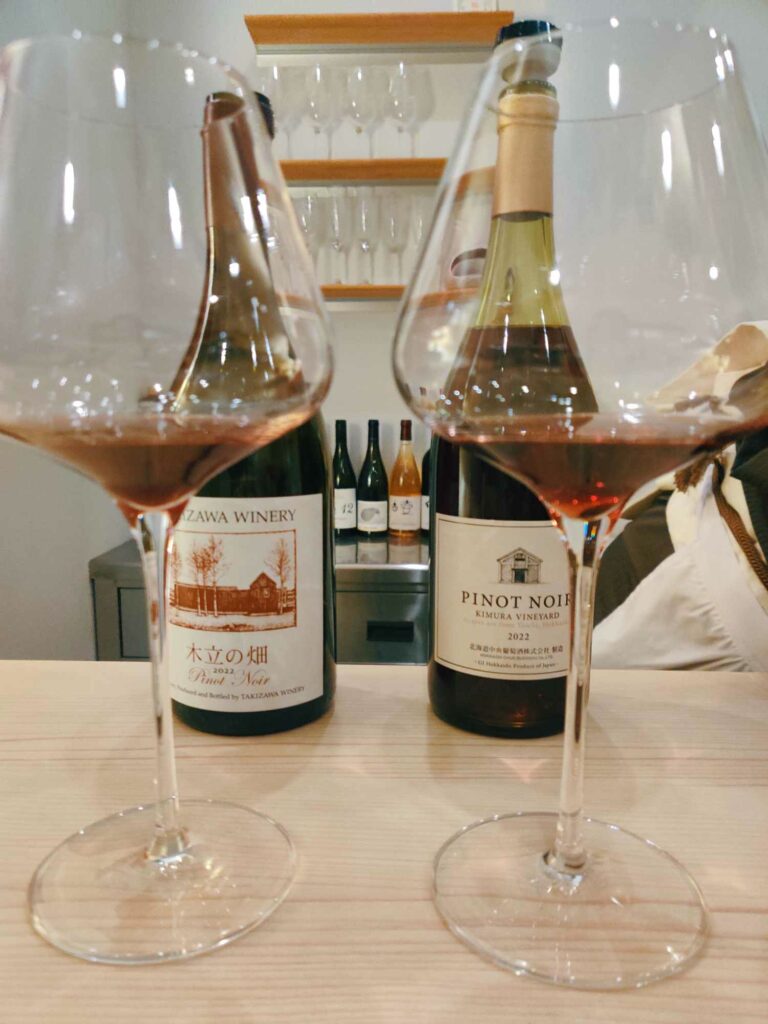
Here’s a peek into two exceptional reds that stole my heart.
Pinot Noir Kodachinohatake 2022
This Pinot Noir from Takizawa Winery, harvested from the “bosquet field” in 2022, was a delightful surprise.
Even though the growing season was tough, with unexpected pest problems and diseases, this vineyard pulled off something special. By the time autumn rolled around, they’d managed to grow grapes that had just the right balance of sugar and acidity. The winemakers were super careful, only choosing the healthiest grapes for fermentation. They even went the extra mile by using wild yeast and skipping the sulfur, letting the wine develop naturally.
The end result? A beautiful, deep ruby-colored wine that greets you with aromas of strawberries, cherries, blueberries, and just a hint of damp earth and mushrooms. When you take a sip, the fruit flavors and gentle tannins unfold smoothly, practically inviting you to take another. The finish is long, with a nice mix of acidity and minerality that really speaks to where this wine comes from.
Sure, it might taste a bit tight right after release, but give it some time to breathe or age, and those aromas will open up beautifully, and the flavors will mellow. Since there’s only a small amount of sulfites, just be sure to keep it stored in a cool, dark spot.
Region: Mikasa City, Hokkaido
My Favorite: Yes! ❤️
Chitose Winery Pinot Noir 2022
Next up, the Chitose Winery Pinot Noir from Kimura Vineyard in Yoichi Town. This one’s a standout as well. After 8 months of barrel aging, it’s ready to shine.
This Pinot Noir shines with a vibrant ruby color, drawing you in with its lovely aromas of cherry and raspberry. When you take a sip, you’re treated to a delightful mix of plum and red berries, with just enough tannins to give it structure without being too heavy.
It’s got a medium body and a bright acidity that keeps those juicy red berry flavors popping. You might also pick up a hint of black pepper and a subtle touch of woodiness and bitterness. Overall, it’s a perfect balance of sweet red berries and refreshing acidity, making it an elegant choice for any occasion.
Region: Kimura Vineyard, Yoichi, Hokkaido
Hirotake Ooka’s Yama and So
Finally, let’s talk about Hirotake Ooka’s Yama and So, a light red wine that brings to mind those early Canon reds.
Hirotake Ooka has an impressive background, born in Tokyo and trained in Bordeaux. His career spans both Japan and France, where he’s been a trailblazer, even starting private Japanese vineyards in France. In 2016, he came back to Japan and founded La Grande Colline Japon, where he’s been pushing the boundaries in viticulture and winemaking ever since.
This particular wine is a blend of Cabernet Sauvignon from Kobe and Yama grapes from Iwate.
Even with a growing season full of challenges like mildew and intense heat, Ooka managed to create a wine with a beautiful light red hue. On the nose, it’s a delightful mix of fruity and smoky notes, with layers of violets, forest floor, and red fruits like strawberries and cranberries. The taste is smooth and medium-bodied, with a light, easy-drinking flow. You’ll notice a sweet-sour berry flavor that’s perfectly balanced with acidity and tannins. This wine is best enjoyed within five years, and since it’s sulfite-free, it’s a good idea to store it below 14°C.
Varieties: 2/3 Cabernet Sauvignon, 1/3 Yama grapes
Regions: Kobe (Cabernet Sauvignon), Iwate (Yama grapes)
Brewing Method: Whole grape fermentation with 21 days of carbonic maceration, followed by natural yeast fermentation and aging in stainless steel tanks.
Final Thoughts
These three wines truly highlight the incredible diversity and potential of Japanese reds. Whether it’s the meticulous craftsmanship behind the Pinot Noir Kodachinohatake, the balanced elegance of the Chitose Winery Pinot Noir, or the innovative blend found in Hirotake Ooka’s Yama and So, each one offers something unique. There’s so much to discover and savor in the world of Japanese red wines.
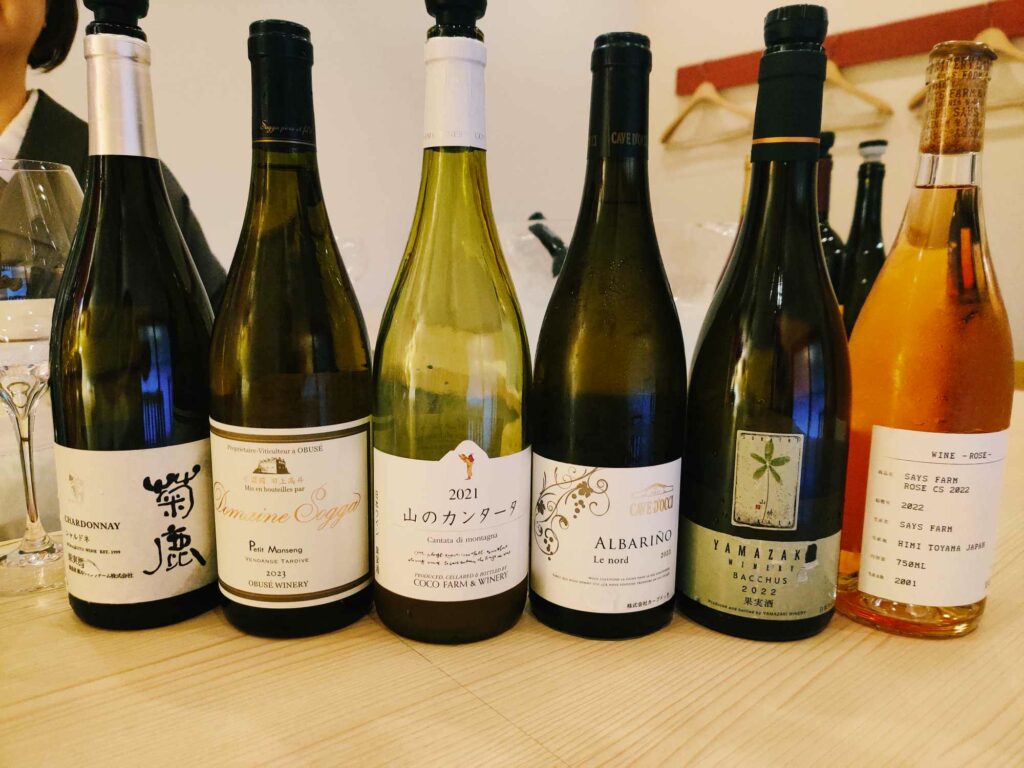
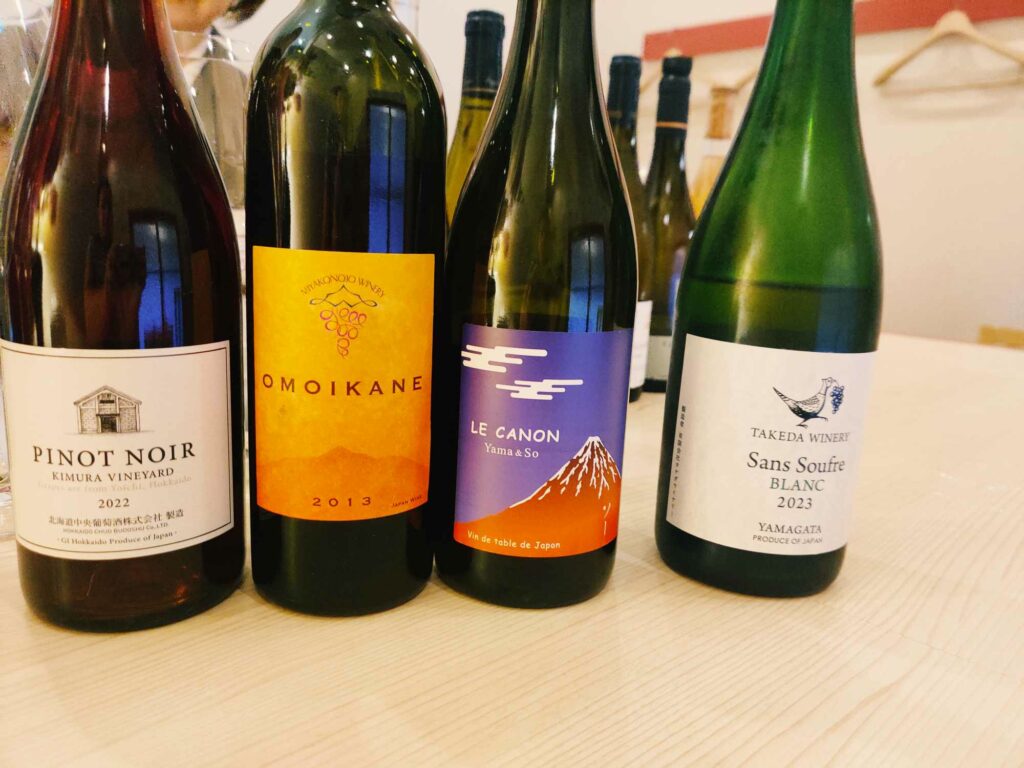
Conclusion : My secret address to tasting Japanese wine in the heart of Tokyo
My evening at the hidden Japanese wine bar in Tokyo turned into an adventure I won’t soon forget. From the thrill of finding the secret entrance to the joy of discovering some truly remarkable wines, it was a night filled with surprises.
In that tiny, cozy room, armed with Google Translate and a bit of determination, I embarked on a mission to explore Japanese wines, focusing especially on the ones from Hokkaido.
The tasting didn’t disappoint. I savored some incredible whites, like the Kikuka Chardonnay, the Petit Manseng from Coco Farm Winery, Albariño – Le Nord, and Bacchus—each one offering something special.
When it came to Japanese Pinot Noirs, the Pinot Noir Kodachinohatake 2022 from Takizawa Winery and the Chitose Winery Pinot Noir 2022 from Kimura Vineyard truly stood out. And Hirotake Ooka’s Yama and So was another highlight, offering perfectly balanced fruity notes that lingered on my palate.
If you’re curious to explore these exceptional wines, I’d love for you to join me on a Japanese wine tasting journey.
Have you ever tasted Japanese wine? Would you like to now? Leave a comment and let me know where’re you’re at in your Japanese wine discoveries!
and of course, if you’re looking for the address, just click here… but shhh! let’s keep it between us!
Cheers to new adventures in wine!
Visit Daisycon



